(At Suvarnabhumi Airport, Bangkok – January 2013)
The jingles, bells and whistles have faded – the calm has set in around me. Arriving back in Cochin from Bangkok was like a locomotive train pulling into the last station after a long journey, letting out the steam and settling down.
(Cochin, Kerala)
But my mind is always travelling. After all these years of many visits to Bangkok, the mysterious appeal of Bangkok still pulls me to it. There are many special people there who I care about and not too many places in there I can go without someone saying, “Hi, It’s good to see you back, Jo” or similar. Missing someone is just a part of moving on…. after all, Goodbyes are not forever.
(At Mandarin Oriental, Bangkok)
Back home, the wind has scattered one month’s deciduous leaves on the ground. But this is not unfamiliar to me. Then again, there is the blissful tranquility and peace of our home – the old, familiar pillow to rest the head on. When we are able to find tranquility within ourselves, only then it is worthy to seek it elsewhere too. I have often found it in the twinkle of a smile, in the presence of my loved ones, in the solitude of a church, up the hill at Le Celle in Tuscany, Italy.
(View of Tuscany – taken in Assisi)
Today I wish to write about Le Celle, a Santuario of San Francesco di Assisi situated above Cortona. It is one of the most distinctive hermitages of medieval Franciscanism – a place that draws you close to God, whoever and whatever one believe that to be.
(View of Tuscany – taken in Assisi)
Tuscany is a place where, more than anywhere else, I breathe easily. It was at Il Porcospino, a Trattoria owned by our good friends Valerio Lo Cascio and his lovely wife Elvida in Firenze where Valerio suggested that we visit Eremo Le Celle.
(Valerio and Elvida)
That lovely autumn day appeared perfect for visiting this pious hermitage for which our friendly abbots of Basilica de San Antonio in Padova had so much praise. Carina and Bianca were enthralled when they first heard of this place.
We have had a good number of wonderful meals and hearty times at Il Porcospino. There prevailed a homely ambiance exemplified by an efficient staff serving Tuscan cuisine. I have read somewhere that the most exquisite food was served for the Medicis in Firenze, especially during the time of Lorenzo de’ Medici (1449-1492). Situated right opposite the entrance of Cappella Medici, Il Porcospino have gained certain competence in their quest for the cuisine Lorenzo il Magnifico savoured.
As we got into Valerio’s four-wheel drive, their black Labrador, Asia, jumped in and took his place in the luggage area where he was safely tucked in. Well, San Francesco loved birds and animals – Asia would be welcome at Le Celle.0
A momentous event occurred some eight hundred years ago which would affect the course of history for many people to this very day. That was the moment when a young man named Giovanni “Francesco” di Bernardone (1181-1226), born into wealth, realized that he was personally called to his vocation – to follow the way of the apostles in poverty and simplicity. This little pauper known as Saint Francis of Assisi who cultivated austerity, but had retained his love for singing, is not a stranger to any of us.
San Francesco is the embodiment of the spirit of Christian romance. We know of his belief that love alone, not suffering, can bring us in unity with God. We know that he had this great intuition to not keep for himself the inspiration that came to him but to pass it on to a community…..
Even though Asia had remained quiet throughout the ride, at times resting his doggy-long snout on Bianca’s shoulder, or looking out through the window, once we started climbing the five km road through endless sloping ranks of vines and olives up to Cortona, he showed signs of impatience to get out of the vehicle.
Way past Cortona, on the well paved path of the villages that wind among settlements on the hillsides where traffic was less, Valerio let Asia enjoy his run before our car, a feat which is absolutely impossible on the streets of Firenze.
The Etruscan city of Cortona with its medieval and Catholic influences, offers an interesting archaeological element to the visitor. Dominating the entire Valdichiana, this walled city, with streets and buildings dating from ancient times, offers a wonderful view as far as Lago Trasimeno. In “Aeneid III and IV”, Virgil called it “…mother of Troy and grandmother of Rome” while in 1993, Pope John Paul II regarded it as“… a marvelous city where everything speaks of God – the nature, the mountains, the woods…”
You have to travel past Cortona in order to reach Le Celle and Chiesa di Santa Margherita located above it on higher ground. Situated around 80 km from Firenze, at about 600 meters above sea level on the border between Tuscany and Umbria, it is the birth place of many artists, namely Pietro da Cortona (Pietro Berrettini, 1596/7–1669) who designed the silver urn in the 17th century to contain the body of the great Franciscan Saint Margherita (1247-1297) which is placed on a windowed casket on the high altar of Chiesa di Santa Margherita. Likewise, artist Luca Signorelli (1445/50–1523) whose important works can be found at the Museo Diocesano, was also born here.
Cortona is home to a good collection of Etruscan and Roman bronzes, Athenian and Etruscan pottery, and ancient coins which can be viewed at Museo dell’Accademia Etrusca in the Palazzo Casali. The Bistecca Festival (Sagra della Bistecca) is held here in mid August. This is in homage to the delicious char-grilled Bistecca alla Fiorentina made from Chianina cattle. This city is featured in the book and movie “Under the Tuscan Sun” (2003) starring Diane Lane.
One of the first places of the friars, Le Celle is located just five km from Cortona, its structure leaning on to Mount Sant’Egidio. I was told that, more than 30,000 visitors leave behind their routine of daily life and hike or ride up to this hermitage each year. This is hardly surprising since the moment you step into its premises; you can feel the air of mysticism that engulfs Le Celle.
I have visited few sacred places allied to early Franciscanism including Alfama in Lisbon, Portugal where Sant’Antonio di Padova was born. Though no two monasteries are alike, Le Celle, ranks amongst one of the most prominent among them where one can experience the beauty and tranquility of the uncorrupted nature.
In the absolute silence that cloak this area, you could feel the mildness and wholesomeness of the air, you could hear the rustling of the wind, the natural sound of the running water of the stream, the chirps and calls of birds in vocal communication, see the green meadows and flowering pastures, well-watered gardens, useful growth of various trees…… Indeed, the sense of peace Le Celle exudes is almost tangible.
Le Celle’s architecture has a predominantly medieval character to it, similar to Cortona and the habitations in the surrounding areas. Devoid of much artistic value, it has a very humble appearance.
Constructed in an irregular manner during the period spanning 1200 to 1600 without a pre-established design, it epitomizes the poverty and simplicity of the early Franciscan architecture which gives it a charming appearance amidst the natural beauty of the surrounding leafy mountainous area – thickly populated by trees and bushes including age-old oaks, spruce, acacia, beech, sweet chestnut, cypress, parasol pine, rows of maples and olive groves with River Vingone streaming on one side.
The sanctuary became known as Le Celle after Francesco and his companions chose it as a temporary place of domicile in 1211, few years after his conversion. To Francesco, it was a period of two halves, one was down-to-earth, the second inspired and imaginative. As per his custom, Francesco used to spent long periods in solitary and secluded places in silence and prayer because he felt it offered him better atmosphere to be with God and converse with Him.
While he was preaching in Cortona, inspired by the brotherly love and peace spread by Francesco, a young noble named Guido Vagnottelli offered him great hospitality in his house. Impressed by the devotion and humbleness of Guido, Francesco was happy to receive him into his Order – no resume, internship experience, and credentials such as extra certification in specialized skills. Having given away all his wealth to the poor, Guido soon embarked on a rigid discipline of Franciscan ideals at Le Celle.
Years later, San Francesco’s charisma would also conquer the heart of young Margherita who was born in Laviano near the Castiglione del Lago in Umbria and would spent the second part of her life in Cortona. She was fascinated by the Saint’s life which reminded her that you cannot convince other people of what you say unless your own life is in accordance with it.
Similar to “Blessed Guido”, Francesco’s words also penetrated the hearts of many citizens of Cortona, springing spiritual enthusiasm in them. On many occasions they had listened to the priests but ‘without actually hearing anything’. When they listened to Francesco, they actually heard.
(Statue of San Francesco at San Damiano, Assisi)
Seeking his future presence amidst them, the inhabitants of Cortona generously offered him the desolate site of a small chapel at the foot of Mount Sant’Egidio. Since the Lombard invasions, it was dedicated to the Archangel Michael. We can see a similar pattern here when we think of Count Orlando Cattani of Chiusi who donated the Mount of La Verna to Francesco in 1213, which became Tuscany’s holiest pilgrimage center.
The small chapel situated by the clear stream, the waterfall (together with the stream, it becomes active during winter), caves, ravines and trees, were originally surrounded by few small cottages of hermits and peasant dwellings.
Here heaven seemed to reach down to earth. Francesco found it to be a suitable place where he could direct his mind completely to God – away from the world, peaceful, with the essential solitude and water. The area was engrossed in nature, beautiful and untainted, which was joyful to Francesco for he loved beauty in everything, in life. What he saw then at Le Celle is rather what the visitor sees today.
Having chosen a cave, he built his little shelter there with stones. This is the little cell, Le Celle in which he briefly lived. We can see a boulder here which is the remainder of that early cave of San Francesco.
We enter Le Celle after we cross the middle bridge known as Ponte Barberini, so named for having been built by the Capuchin novice Antonio Barberini (1607-1671), the cardinal-nephew of Pope Urban VIII (Maffeo Barberini – 1568-1644). Ponte del Granduca which is a bit downstream is named after Gian Gastone de’ Medici (Giovanni Battista Gastone, 1671-1737), son of Cosimo III de’ Medici and the last Medicean Grand Duke of Tuscany. He constructed it in 1728.
The first impression as we step into Le Celle is of peace, silence, plainness and good sense. Inside the cell where San Francesco stayed and prayed, there exists his wooden plank which was his cot. All of these are retained in its original place.
Above the door of the cell is an ancient manuscript: “Take off your shoes because the place in which you stand is holy ground.” Surrounding Francesco’s cell, other poor little huts were constructed at that time, out of natural caves or with branches of trees to accommodate his companions. They underlined the similarity of their souls to lead a life of meditation and spiritual friendship.
Some documents cite that San Francesco visited the sanctuary in April, 1215 for Easter after having spent the period of Lent in Isola Maggiore, the second largest island on Lake Trasimeno in Umbria. In Chapter VII (105) of “Vita prima S. Francisci”, his first biographer Tommaso da Celano set down that, during April 1226 while in Siena for treatment of the infirmity of eyes, Francesco fell gravely ill. Upon his recovery, he had gone to Le Celle with Brother Elias where he fell ill again. He was escorted to the Church of St. Mary of Porziuncola (later Basilica Papale di Santa Maria degli Angeli Porziuncola) where he died peacefully at the age of forty-four on October 3, 1226. It was at Porziuncula where he founded the Franciscan Order of Friars Minor back in 1209.
(La Porziuncola)
During that final stay at Le Celle, his body was bearing the marks of stigmata which he received in September 1224 on the mountain of La Verna (Monte Penna). That was when Francesco documented the ideals he had believed in and his last wishes. Probably, Le Celle holds the honour of being the place where he dictated his Testament.
(Basilica Papale di San Francesco in Assisi)
The construction of the Lower church forming part of Basilica di San Francesco on a hill at the west side of Assisi was completed in 1230 (Foundation stone was laid on July 17, 1228 and construction started as per design and supervision of Brother Elias, by then the second Minister General of the Order of the Friars Minor). In order to promote the growth of the Order and to conserve the precious places where Francesco and his first followers had stayed, in 1231, (six year’s after the death of San Francesco), Elias undertook a number of restoration and expansion works at Le Celle strictly according to the virtue of poverty loved by San Francesco.
On the upper floor, he arranged eight cells measuring two meters by two that opened onto a long corridor that cut across its center. A door marked no: 4 with Elias’ picture above it, is traditionally believed as his cell (one of Elias’ two residences, the other being in Assisi). It is believed that Sant’Antonio di Padova, who was educated and specially fitted to preach, was also a visitor to Le Celle during this time.
Caught in the ideological differences between Pope Gregory IX and excommunicated Holy Roman Emperor Frederick II (1194-1250), Elias was forced to retire to Cortona in 1239 where he built a church and monastery dedicated to San Francesco.
With the departure of Elias, Le Celle gradually lost its significance though some hermits lived there, including a community of Fraticelli (Little Brethren or Spirituali). This group of Friars Minor observed extreme proponents of the rule of San Francesco, mainly regarding poverty – his original lifestyle. Fraticelli developed into a separate entity after they were declared heretical in 1296 by the Church under Pope Boniface VIII (1235-1303).
It was during the period of Fraticelli that the present church was constructed at Le Celle, but after their departure in 1318, the convent was left abandoned though no one proposed that it should be abolished.
By 1537, the hermits from the newly founded Order of Capuchin Friars Minor, offshoots of Franciscans, took their turn to occupy Le Celle after it was granted to them by the Bishop of Cortona. They turned it into the seat of their novitiate.
They led a life of extreme austerity, poverty and simplicity – as closer to the ideals of San Francesco as was practicable, working among the poor and teaching the Christian life by living it.
Retaining the original architectural style, they enlarged the convent, constructing the highest part on the existing structure which now houses some twenty cells in the size of two meters by two on the upper level, corresponding to the number of novices who enter the Order each year to engage in prayer and work.
The present chapel which the visitor will find adjacent to San Francesco’s cell was the Dormitory of the first community which was transformed into an Oratory dedicated to the Stigmata of San Francesco in 1614.
It has a small altar, devoid of art objects, but only an essential picture of Madonna and Child, hanging above it. Similar paintings, including one by Italian painter Simone Pignoni (1611-1698), can be seen elsewhere in the sanctuary.
The building also houses a Bibliotheca to cater to the religious and cultural needs of the brothers. Of the good number of old theological books, one can see leather bounded volumes of “Compendium Theologiae Moralis” by Fr Gabriele De Varceno. Apart from the vegetable gardens, the front and sides of the buildings are adorned with beautiful lawns and hedges – all well maintained.
This atmospheric and evocative place has changed little since the Middle Ages. The humble friars of Le Celle are not bounded by its walls, but live their lives in the public eye, inspiring others to follow their example.
The laity could observe the lives of the friars as they went on in a continuous succession of prayer and work. Rituals like daily procession after reciting Matins, etc are observed in their monastic life.
A placard here displays the timing of their daily routine in which private prayer, public reading, communal worship and manual work are balanced.
Over the centuries the sanctuary grew famous among the believers as a godly inheritance of the past. The serene ambiance, the simplicity of the buildings, the way of pious life, the contents of the library, the regular activities of preaching and catechesis, the grooming of the novices, the signature look of the friars – all reflects austerity and the original poverty and compassion towards every suffering person – aspects that reach out and touch the discerning visitor.
Eremo Le Celle heartily welcome homeless people who seek their solace or anyone who want to know and assimilate the very essence of Francesco’s unique vision and wish to involve in the life of their community.
(Valerio with Asia)
They provide facilities for spiritual retreat to priests as well as to independent groups of visitors in the little houses adjacent to the convent for limited period of time. A friar, who generously allowed us to take photographs, told me that some couples even chose the hermitage as venue to bless their wedding. The charm of San Francesco remains irresistible.
There were fewer visitors on this day of our visit. But unlike the lot I have observed in some places of worship in Italy where they simply chatter and click photographs; loiter around in flip-flops, wore revealing tops and trousers that reach just below the knees, that impious phenomenon was missing here.
This is not a place for sightseeing and the air of serenity draws your attention to the notice that enjoin strict silence – for almost everywhere you walk, San Francesco’s spirit reappears.
As I walked out into the side courtyard, I could see Asia happily moving around on the paved ground in the company of Bianca. He was staring at the swallows darting by the old oak tree. Upon seeing me, he came running towards me. How happy he appeared in this special place…
At this point, I could hear bells ring – calling the friars to pray. It is time for us to leave – for now. I believe I will come back here another time and I know I would be welcome to this magical experience. When you start believing, you will discover that all things are really possible. San Francesco was a house without windows or doors. We all could come and go – in peace. Ciao, Jo
PS: Asia left for dog heaven in November 2012.
Paintings Courtesy: Wikipedia Public Domain:
1) “Êxtase de São Francisco de Assis “ (1642) by Jusepe (José) de Ribera (1591-1652);
2) “San Francesco di Assisi “ (1597-99) by Lodovico (Il Cigoli) Cardi (1559-1613);
3) “Estasi di Santa Margherita” by Jacopo Alessandro Calvi (Il Sordino – 1740-1815)
(Photos: © Joseph Sebastine-Carina Simeon-Bianca Celine Diane-Andrea Lalis Sebastine/Manningtree Archive.)

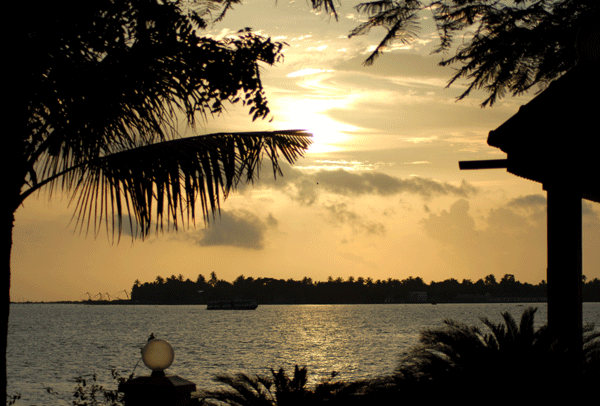
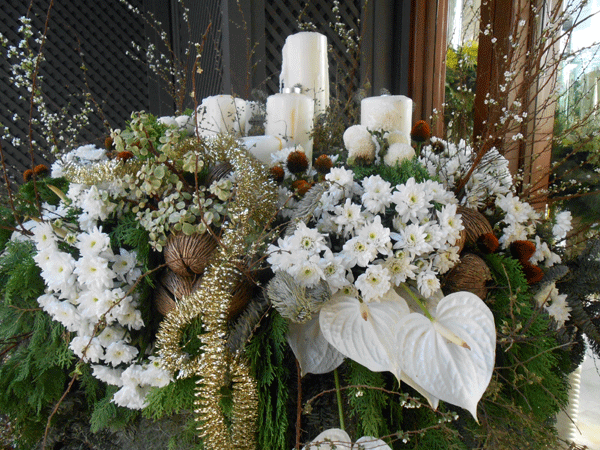
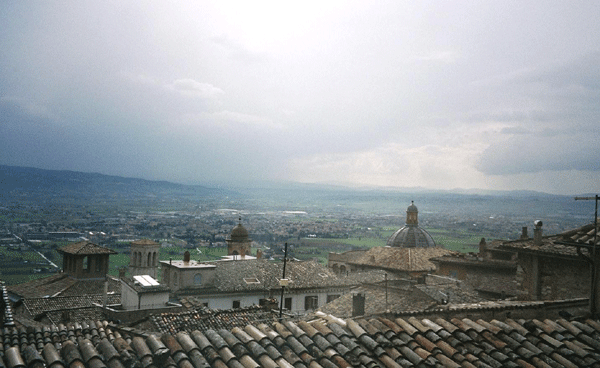
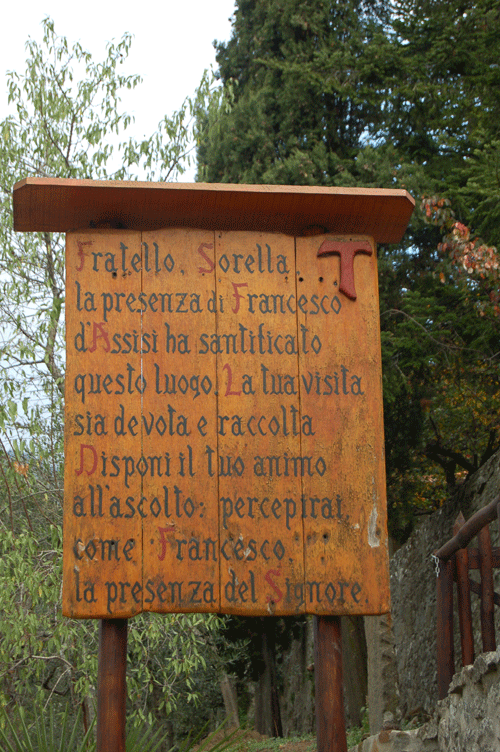

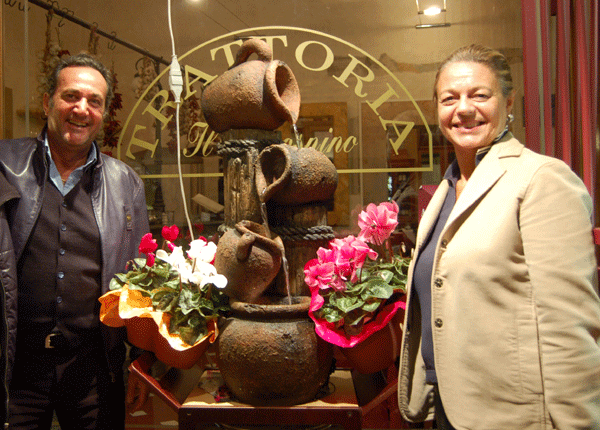
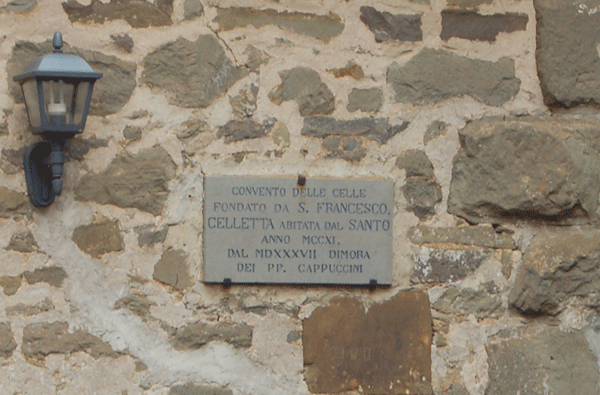
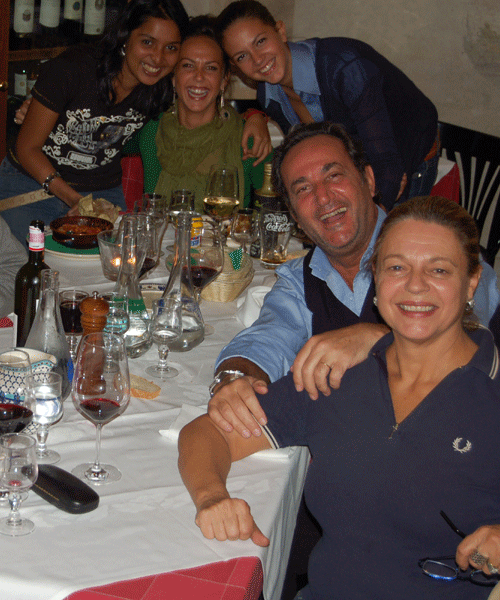
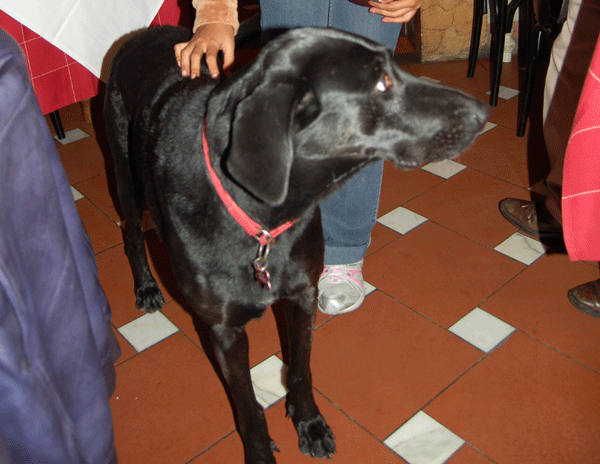
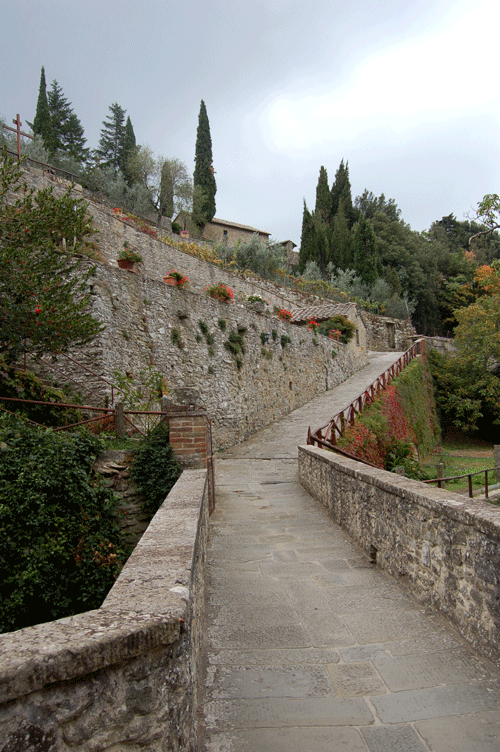

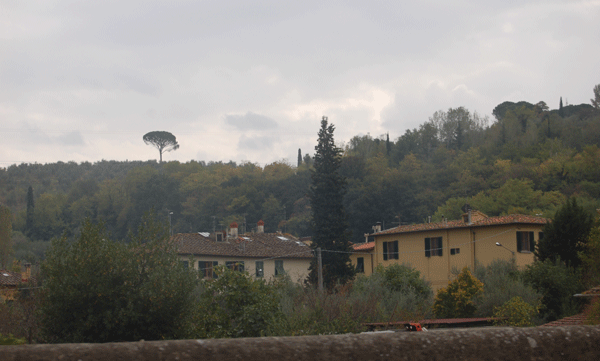
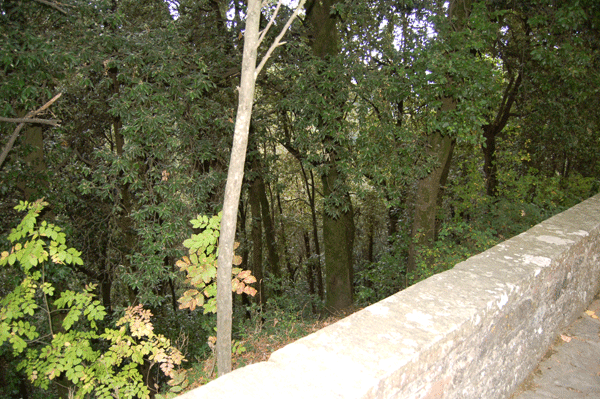
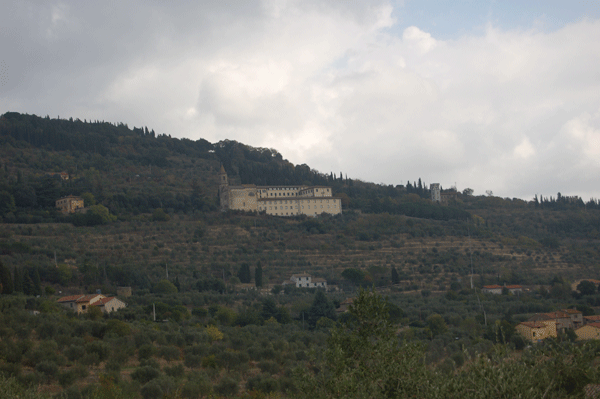
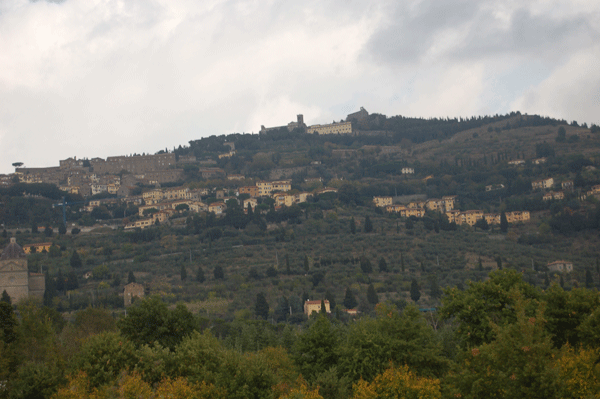
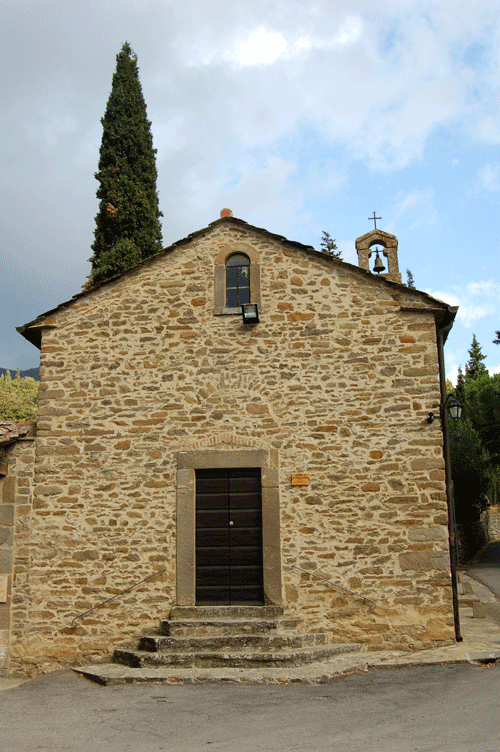

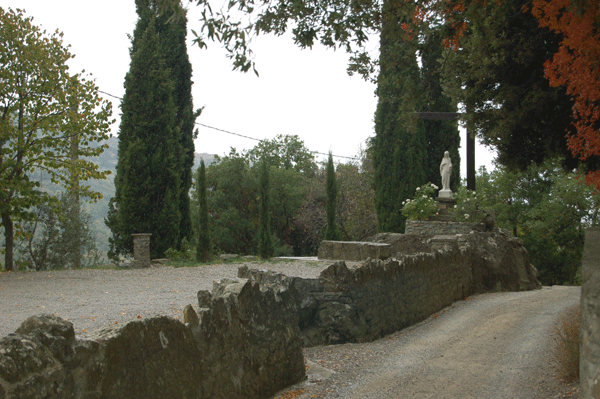
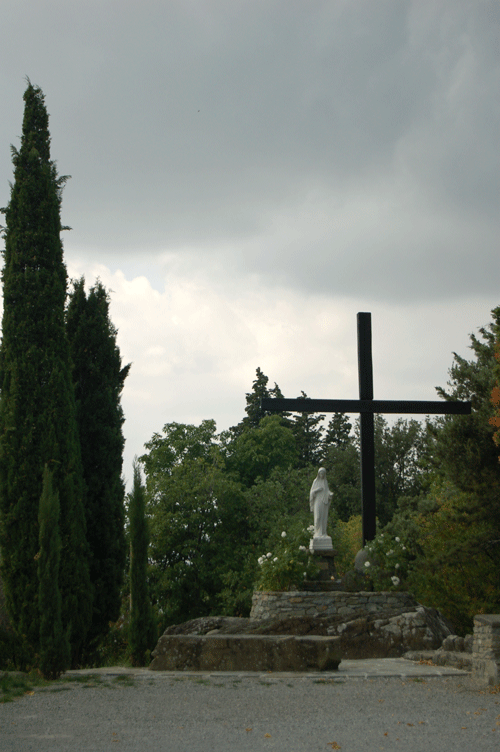


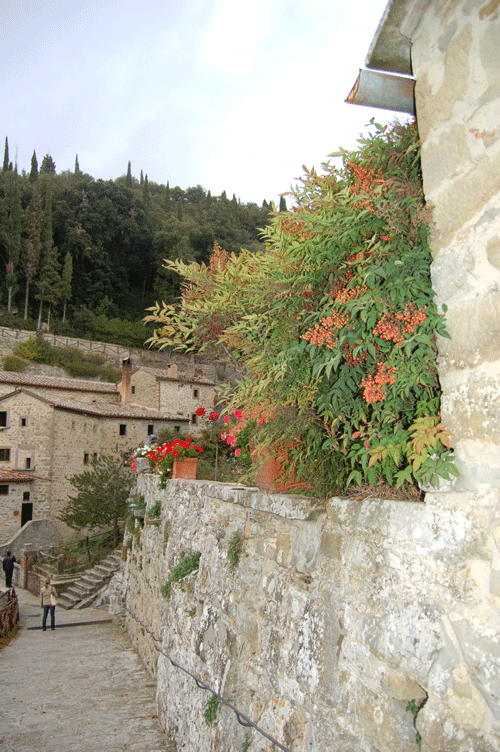
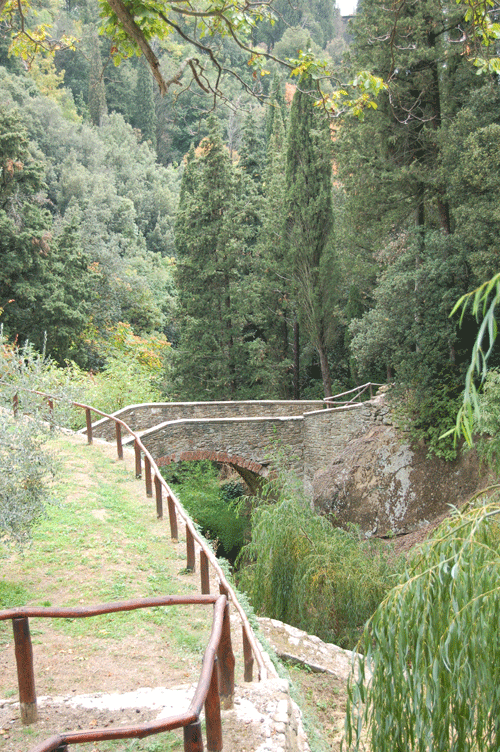

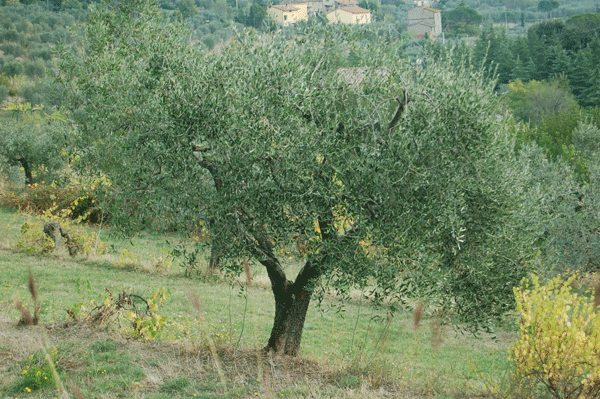
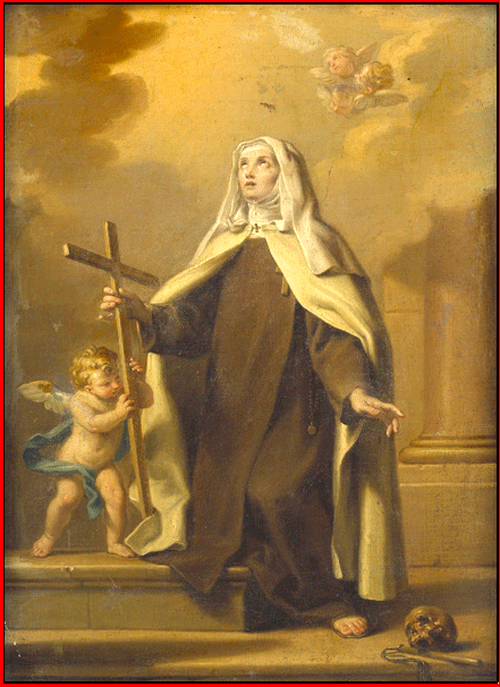
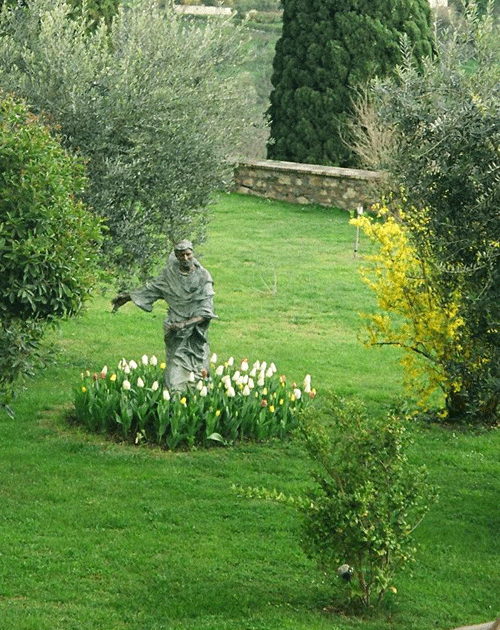
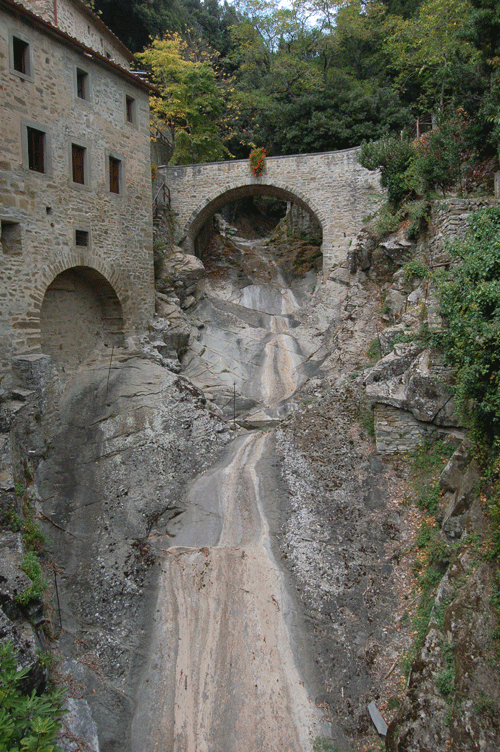
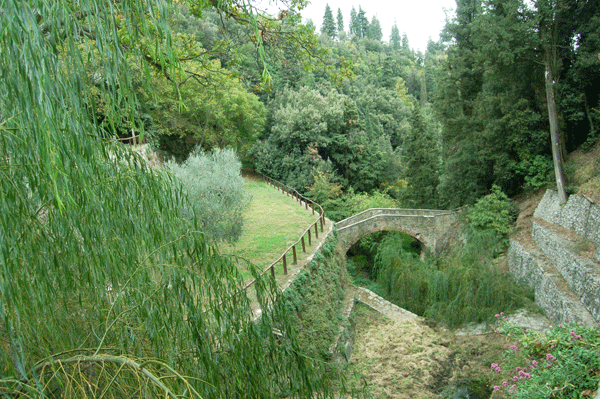
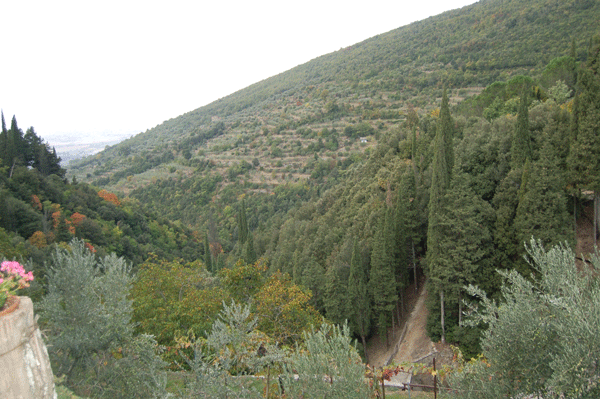



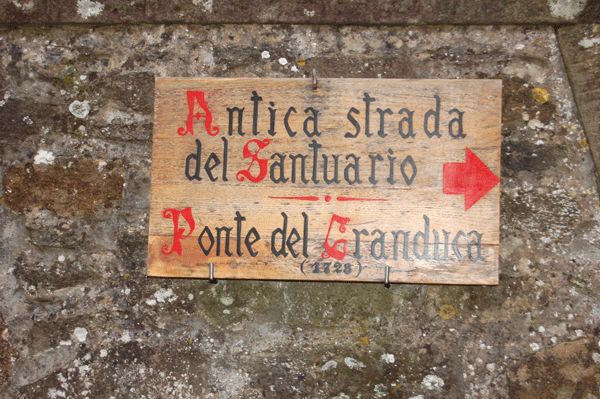
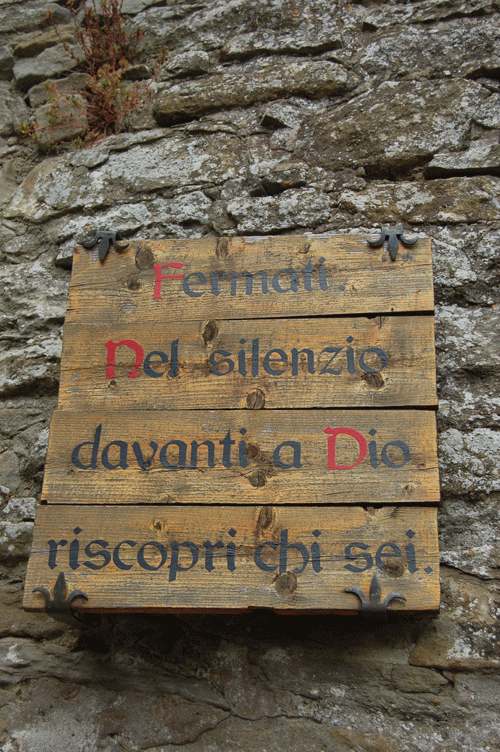
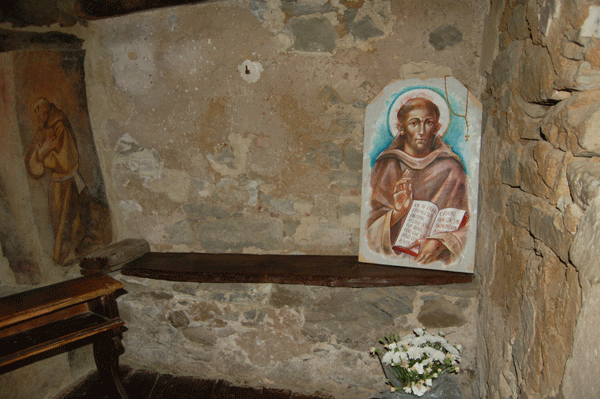

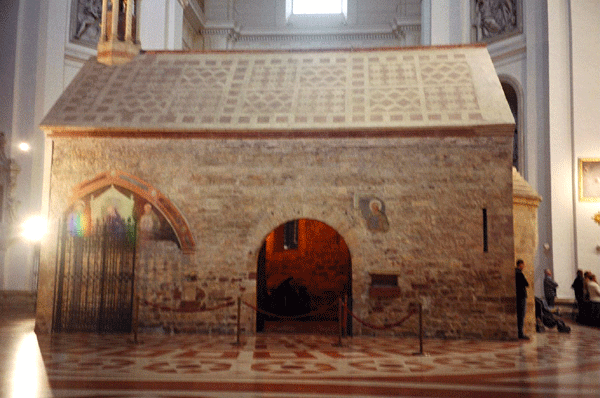
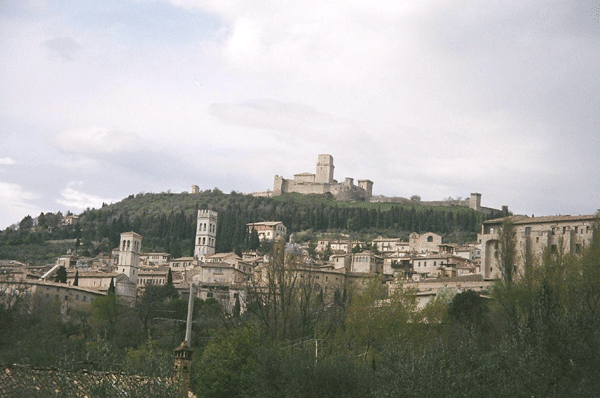
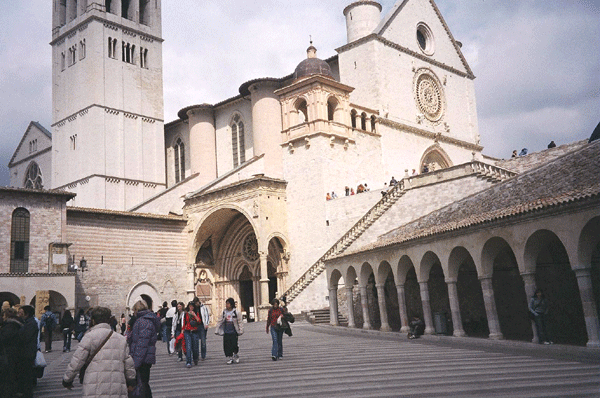


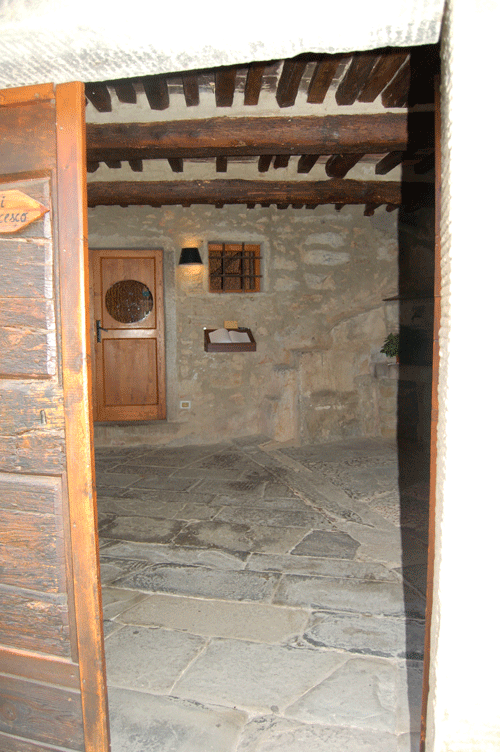
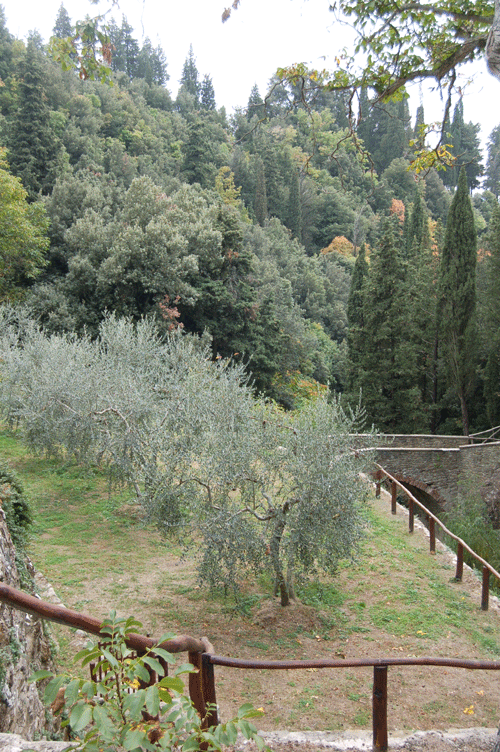
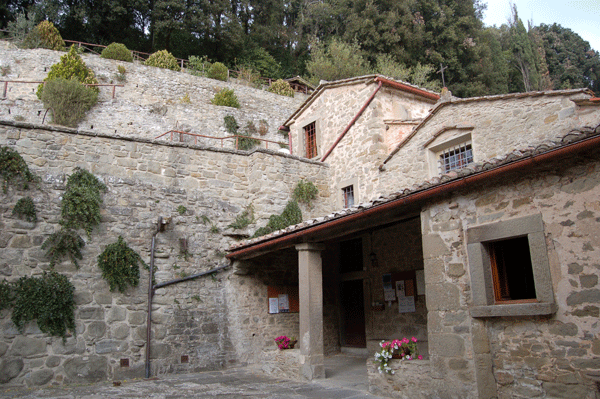
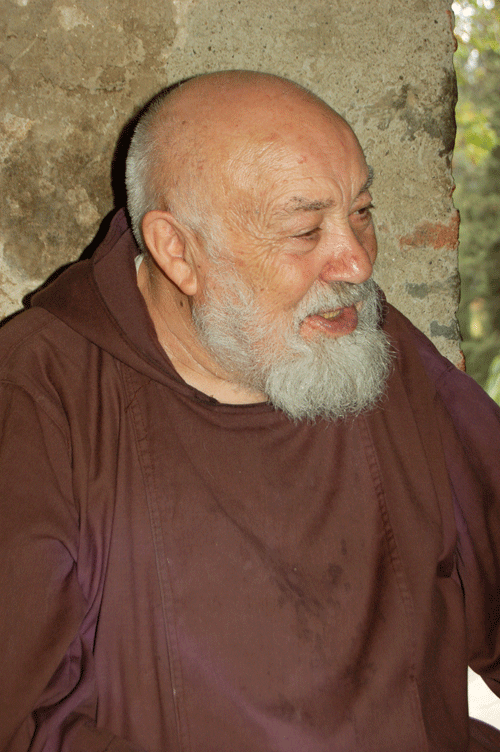
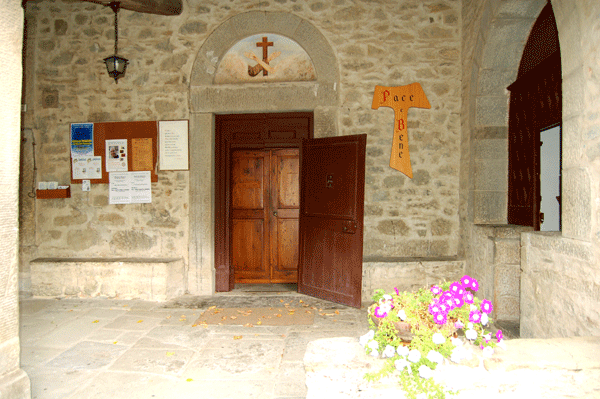
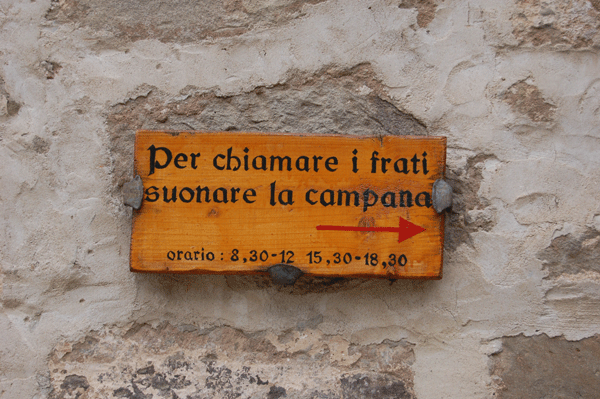
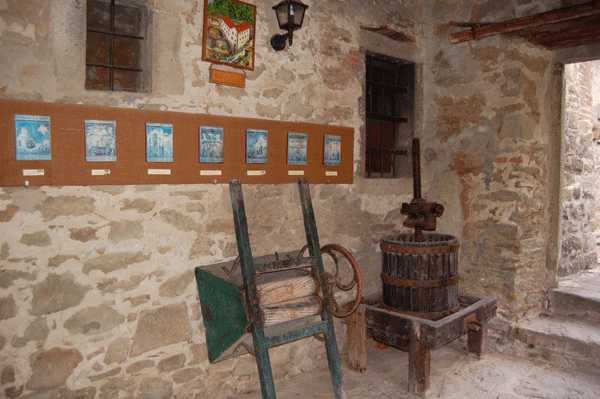
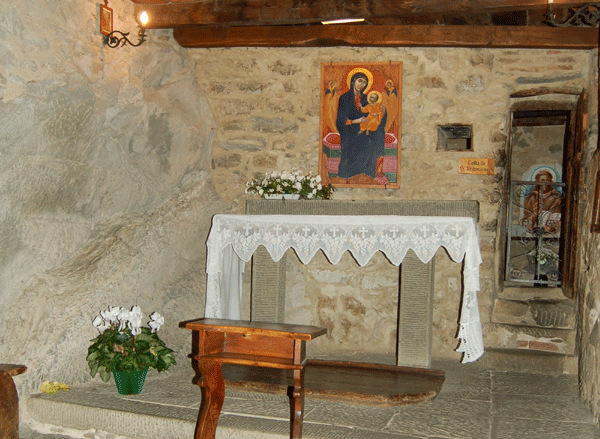


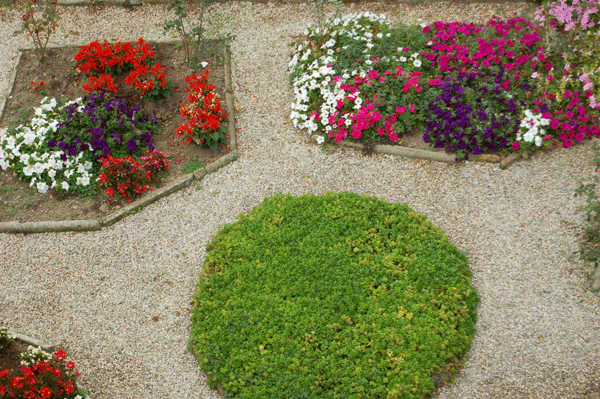
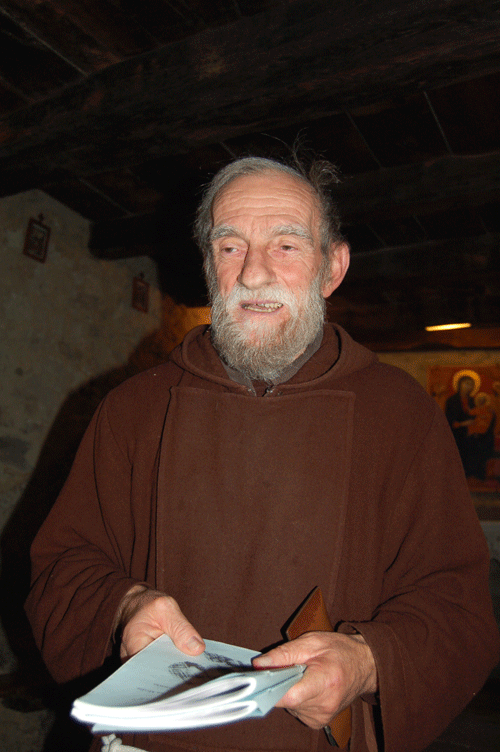

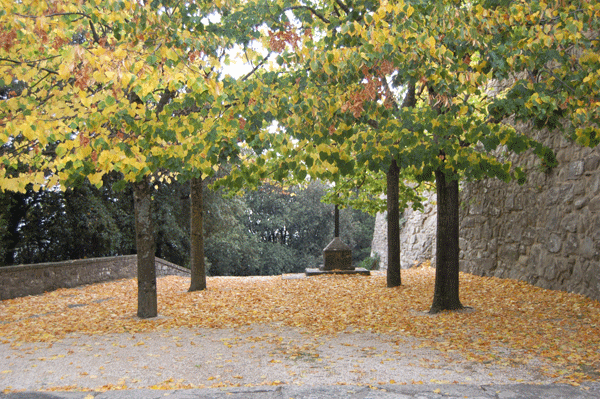
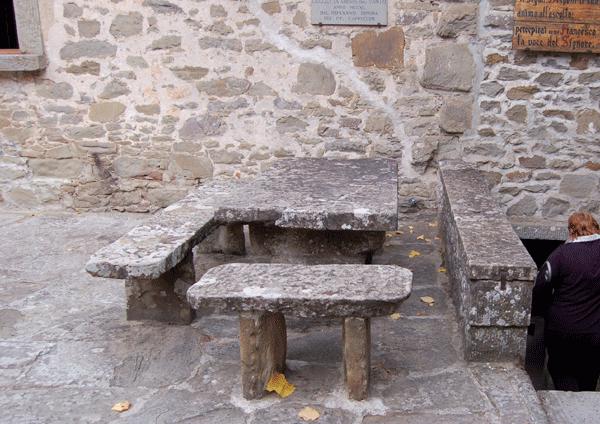
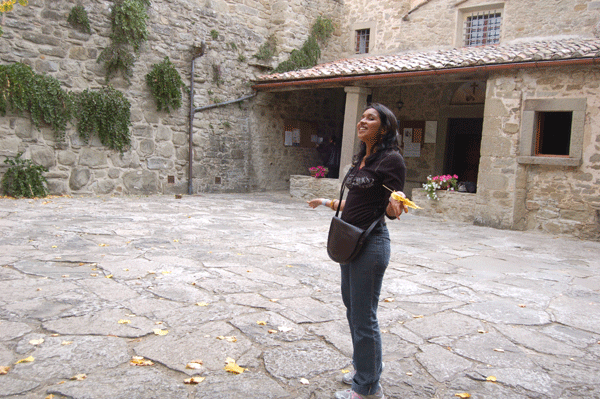

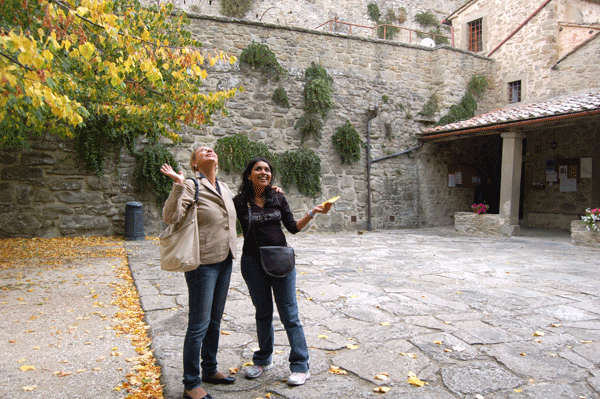
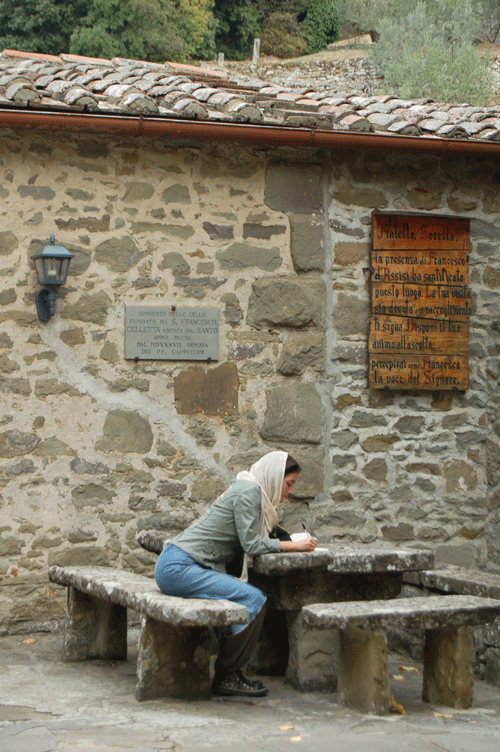
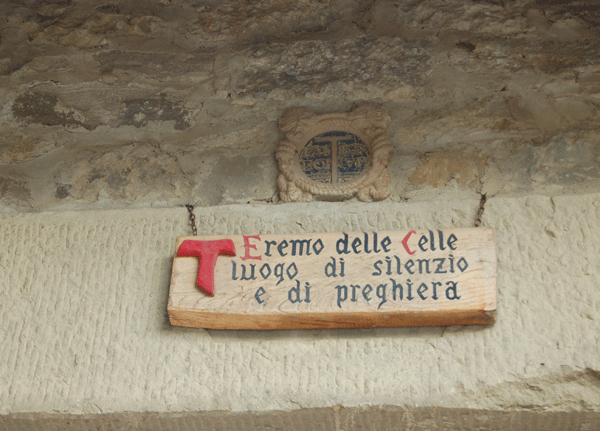
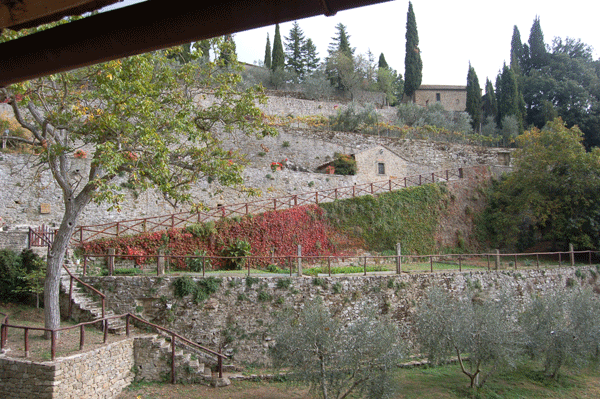
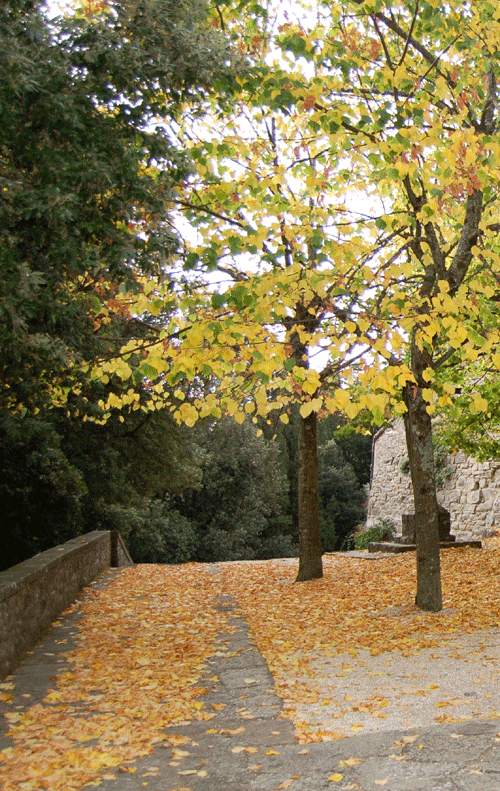

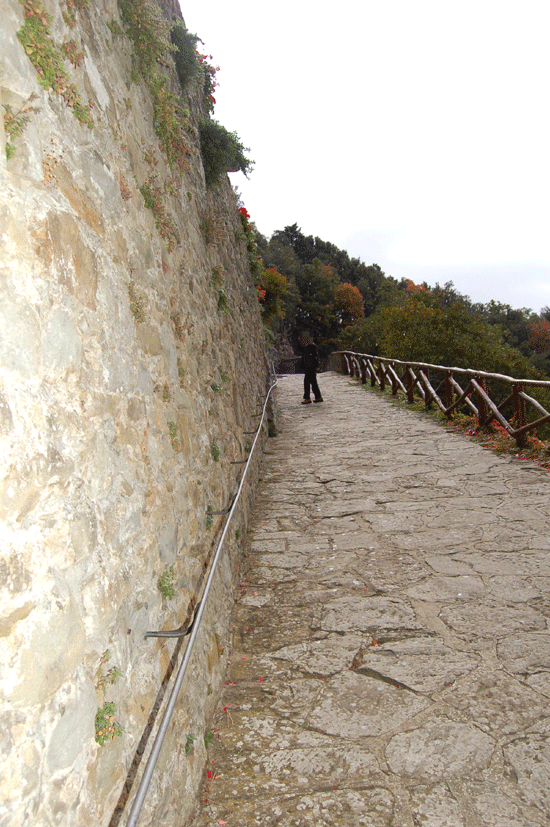
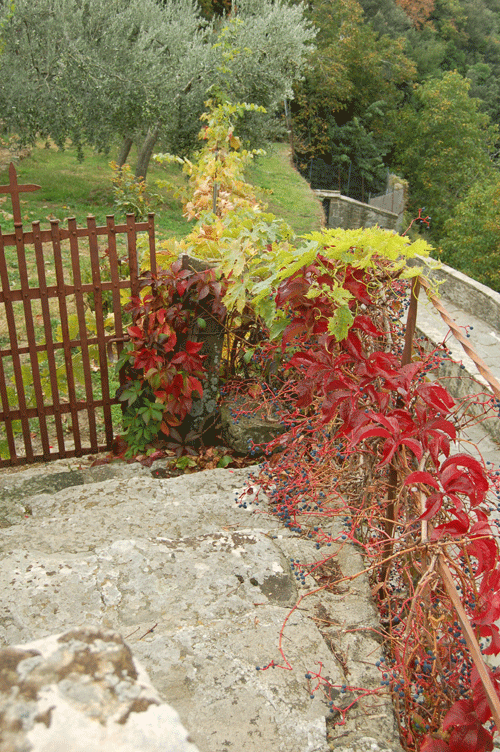
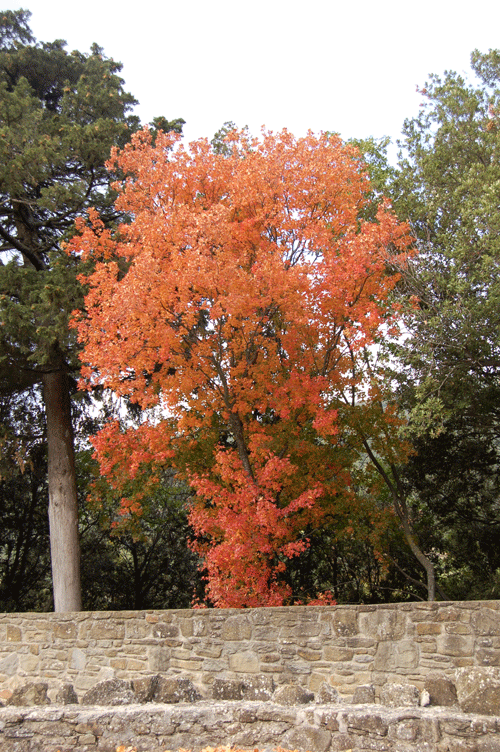
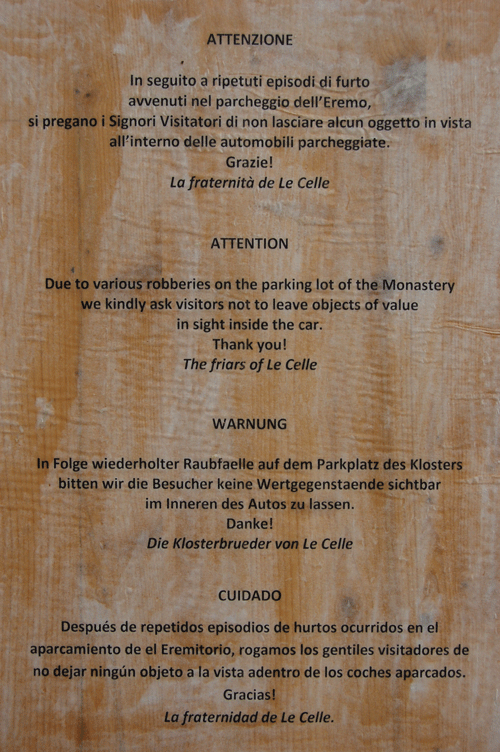

An excellent well edited post with interesting photos. Thank you.
Thanks.
What a wonderful time you all enjoyed Jo, and the pictures tell a wondrous tale..!
Asia is gorgeous… 😉
Thank you, Carolyn
What an appropriate day to post this long awaited story on Le Celle. Today is your birthday and I am sure San Francesco’s blessings will be with you. With my love, Carina
Thank you.
Brilliant post and amazing photos. Welcome back Jo and Happy Birthday!
Many thanks, Carol 🙂
Welcome back Jo 🙂 Your photographs are beautiful. Thanks for sharing your trip with us. It was a wonderful read.
Thank you, Elizabeth.
What a wonderful vacation I just had, scrolling down and seeing your beautiful photos. Thanks for bringing me along!
Thanks. You are welcome. Jo
Looks wonderful!
It certainly is.
As ever, beautiful, entertaining and educational Jo – thank you for sharing with us
Thank you, Tracy. Glad that you liked reading about my visit to Le Celle. All events are blessings given to us to learn from. Jo
Tuscany is on my list for places to visit. Thanks for sharing your visit!! Lovely!
Thank you. I am sure you will enjoy your visit to Tuscany.
Ma che bello, Jo! What a wonderful experience to be lived!
May Asia rest in peace.
I hope you will get to visit Le Celle one day. 🙂
Everything is beautiful.
Thank you. That beauty has a natural existence. Jo
It has been several days since i have seen the sun. Heavy marine fog shrouds us. Today I stood in the sunlight with this enchanting visit to sunny Tuscany and Le Celle.
Thanks. Enjoy your day. Jo 🙂
Loved the article!nice pictures too
Thanks and to you, too for some of the pics.
Splendid!
🙂
Very nice! I wonder if there’s anybody in the world that doesn’t like Italy 😀
I enjoyed that movie “Under the tuscan sun” 🙂
Thank you. Yes, that’s an enjoyable movie.
What a beautiful adventure. Thank you for sharing it with us. Living vicariously and happy to see it.
I am glad you liked it. Thank you, Beth. Jo 🙂
What a wonderful trip. It really inspires me to go with those stunning photos!
So happy to learn that you like it… 🙂
These photographs are incredible, and your words guiding me along. I am quite jealous. How beautiful it must have been for you what an amazing experience! I hope one day to go there also, thank you for sharing your adventure here! 🙂
I went into that house and felt very happy and at peace. Thanks for stopping by, Penny. Glad to see you here. Jo 🙂
It was nice to visit, and I’m very glad I did or I would have missed out on all this! 🙂
By the way,I never read the book,though I wanted to order many times,forgot, after reading this post I went straight to bookdepository and ordered it,finally 😉
Since you like “Under the Tuscan Sky”, I think you may also try Marlena De Blasi’s “A Thousand Days in Tuscany: A Bittersweet Adventure” (which is a sequel of “A Thousand days in Venice: An Unexpected Romance”.) Enjoy. Jo 🙂
Thanks, I will remember that next time it’s time to order some new books 😉
Absolutely fantastic! Beautiful photos!
Hallo,
This is for you, for being kind for others and me, http://www.bigcards.nl/card/pickup/bc-c7cf3c10/
Sweet greetings, Summer
Thank you so much, Summer. That was very sweet of you. Jo 🙂
You’re welcome : ) And thanks to you too
Beautiful photos Thank You 🙂
Thank you.
wow
🙂